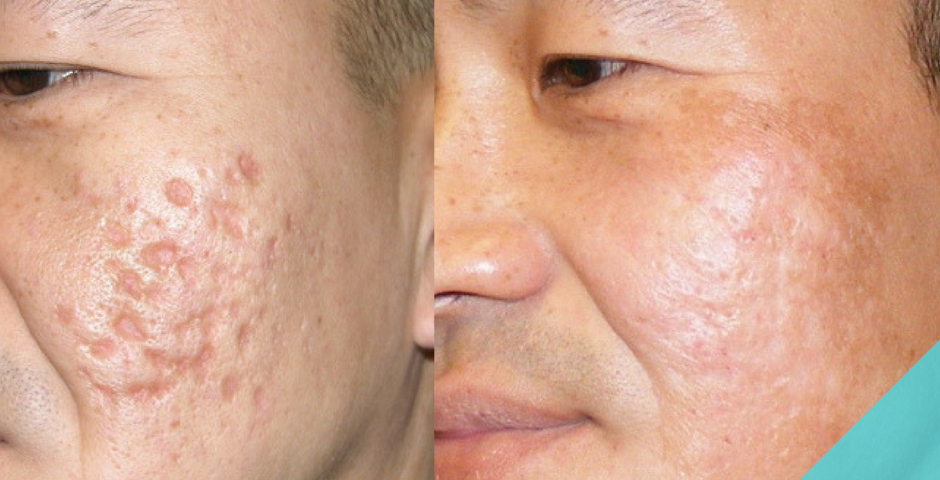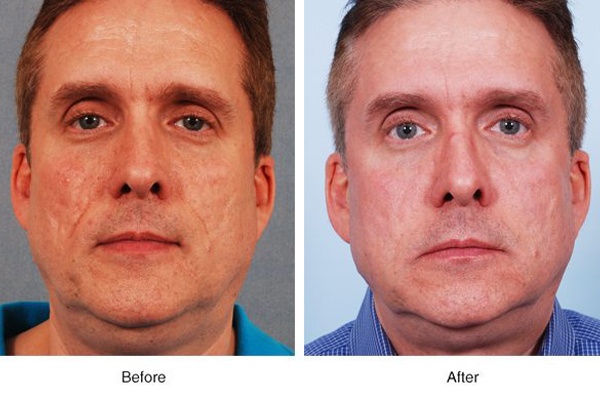Advanced Acne and Acne Scars Treatment: Bid Farewell to Acnes
Advanced Acne and Acne Scars Treatment: Bid Farewell to Acnes
Blog Article
A Comprehensive Overview to Managing Skin Disease: Focusing on the Treatment of Acne Marks
Acne scars represent a significant concern for lots of people, typically affecting self-confidence and general skin health and wellness. Recognizing the numerous types of acne scars, such as atrophic and hypertrophic, is essential for reliable monitoring and therapy.
Comprehending Acne Scars
Understanding acne scars involves identifying the intricate interplay between skin healing and the inflammatory processes that take place throughout acne break outs. Acne establishes when hair follicles end up being obstructed with oil, dead skin cells, and microorganisms, bring about swelling. This inflammatory reaction is essential for dealing with infection yet can also result in damage to the skin's tissue.
When the body attempts to recover itself, it generates collagen, a healthy protein essential for skin framework. The quantity and top quality of this collagen can vary, leading to various types of marks. Aspects influencing mark formation consist of the seriousness of the acne, specific skin type, genes, and the body's healing reaction.
Additionally, early intervention in acne therapy can play a crucial duty in protecting against scarring. Prompt administration of breakouts reduces inflammation and cells damages, which are essential variables in mark advancement. Education on proper skin care and therapy alternatives is crucial for people susceptible to scarring. Ultimately, comprehending the underlying mechanisms of acne and its healing process is important for efficient monitoring and avoidance of acne marks.
Kinds of Acne Scars
The complexity of acne marks can be classified right into numerous distinct types, each reflecting the underlying skin damages and recovery reaction. One of the most usual types include atrophic scars, hypertrophic scars, and keloids.
These scars can better be categorized into icepick, boxcar, and rolling scars, each differing in shape and depth. Icepick marks are slim and deep, looking like tiny slits, while boxcar scars have a larger, extra angular look.
Hypertrophic scars, on the other hand, are increased and arise from an overflow of collagen during healing. These scars may differ in dimension and can sometimes fade in time however might continue to be prominent.
Keloids are a more extreme kind of hypertrophic scarring, expanding past the original injury site and typically calling for extra aggressive treatment choices. Comprehending these kinds is crucial for identifying the most efficient treatment method customized to a person's details mark kind and skin problem.
Topical Treatments

Topical therapies play a critical duty in taking care of acne marks, offering people a variety of choices targeted at boosting skin appearance and appearance. These treatments largely focus on advertising skin regrowth, decreasing pigmentation, and boosting general skin tone.
Among the most extensively made use of topical agents is retinoids, which are by-products of vitamin A. Retinoids boost collagen production and accelerate cell turn over, assisting to diminish the look of scars in time. In addition, alpha hydroxy acids (AHAs) and beta hydroxy acids (BHAs) can exfoliate the skin, getting rid of dead skin cells and advertising a smoother surface.
An additional efficient category consists of topical anti-oxidants, such as vitamin C, which can help to lighten hyperpigmentation associated with acne marks while supplying anti-inflammatory benefits. In addition, silicone gels and sheets have been revealed to hydrate and squash scars, making them much less visible.
Hydroquinone is commonly used for its skin-lightening residential or commercial properties, although it needs to be utilized meticulously as a result of prospective negative effects. Integrating creams that have ingredients like hyaluronic acid can additionally support skin recovery and enhance texture. For optimal results, it is a good idea to get in touch with a skin specialist for tailored therapy recommendations.

Expert Treatment Options
When it concerns dealing with much more severe acne scars, patients often turn to expert treatment options that can deliver more significant outcomes than topical treatments alone. These interventions are generally administered by dermatologists or accredited practitioners and consist of numerous methods tailored to individual skin kinds and mark intensity.
One of one of the most usual therapies is chemical peels, try this out which use acids to exfoliate the skin and promote regeneration. This method can significantly lower the look of superficial marks. Microneedling, one more effective alternative, involves creating micro-injuries in the skin to boost collagen production, enhancing appearance and reducing marks.
Laser treatment is additionally extensively employed, with fractional lasers specifically targeting marked regions while protecting surrounding skin. This approach can produce remarkable enhancements in skin appearance over numerous sessions. Furthermore, facial fillers are utilized to recover volume and ravel unequal skin surfaces, supplying immediate, albeit short-lived, results.
Way Of Life and Home Remedies
Integrating lifestyle adjustments and home solutions can play a considerable duty in handling acne marks, complementing expert therapies. Keeping a well balanced diet rich in anti-oxidants, vitamins, and minerals can help with skin healing - acne and acne scars treatment. Foods high in vitamin C, such as citrus fruits, and those having zinc, like nuts and seeds, promote skin regeneration and assistance lower inflammation
Hydration is also critical; drinking sufficient water maintains the skin hydrated, assisting in its all-natural fixing processes. Regular exercise enhances blood circulation, which can boost nutrient distribution to the skin and improve overall skin tone.
Along with dietary changes, incorporating topical home treatments can be advantageous. All-natural active ingredients such as aloe vera, honey, and tea tree oil have antibacterial and anti-inflammatory residential or commercial properties, which might help in decreasing the appearance of scars. Scrubing the skin with gentle scrubs can likewise advertise cell turnover, helping in the fading of scars in time.
Furthermore, establishing a regular skin care regimen that includes sun protection is vital, as UV exposure can darken marks. By incorporating these way of life adjustments and natural home remedy, individuals can enhance their skin's recovery procedure and accomplish a more even skin tone.
Conclusion
Reliable monitoring of acne scars necessitates a comprehensive understanding of their kinds and the underlying systems involved in mark development. A combination of topical therapies, specialist therapies, and lifestyle alterations can substantially improve skin healing and lessen scar presence. Highlighting the significance of useful reference collagen production, a well balanced diet, and a regular skincare regular adds to enhanced skin health. Inevitably, a multifaceted strategy makes sure optimal end results in the treatment of acne marks, promoting restored confidence in people influenced by this problem.
Comprehending acne marks involves acknowledging the complex interplay in between skin healing and the inflammatory procedures that occur throughout acne break outs. Aspects influencing mark development include the intensity of the acne, specific skin type, genetics, and the body's recovery response.
These scars can better be classified into icepick, boxcar, and rolling scars, each differing in form and depth. Icepick scars are narrow and deep, resembling little slits, while boxcar marks have a wider, much more angular look (acne scars).Effective administration click site of acne marks demands a comprehensive understanding of their types and the underlying systems involved in scar formation
Report this page